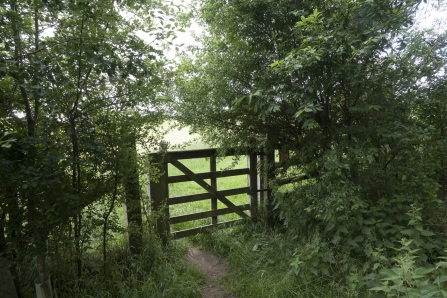
Juliet’s Wood out of lockdown (July 2020). Image by: Duncan Hoyle.

Juliet’s Wood out of lockdown (July 2020). Image by: Duncan Hoyle.
Normally, a team of at least five volunteers would have been on the reserve once a month from March throughout the summer growing season keeping the paths tidy for the regular visitors, but logistical difficulties caused by COVID-19 now means that this is just down to a single staff member.
On his first visit back, Duncan Hoyle, Trust Estates Officer discovered paths were overgrown but passable and blackthorn at the entrance gate required some contortion to get past!
Although the growth of the grass and blackthorn is an inconvenience on the paths, the growth on the coppiced trees is just what conservationists wanted on the site and he was delighted to see that the trees which Trust volunteers cut back last winter were growing well.
In 2009, the centre of the reserve was planted up with a mosaic of small blocks of hazel and elm trees.
The main reason for the planting and management regime was to introduce more elm trees to the area as a food source for white-letter hairstreak butterflies which live close by - elm is their only food source and with the decline of elm trees due to Dutch Elm Disease their numbers have decreased.
Blocks of hazel trees continue to be planted on the site to increase diversity. Last winter, Ponteland Wildlife Group funded the wire protection around them and in March, the wildlife charity’s team of estates volunteers and staff managed, just in the nick of time, to install the last of the protection around them - just as well as the resident deer and hares are particularly partial to nibbling the fresh growth from the coppice stumps.